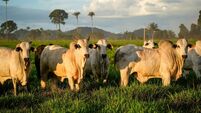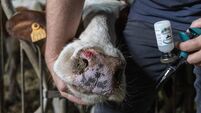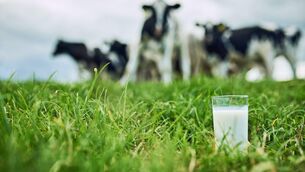Holding onto BVD infected calves bad move
Investing in feeding and rearing such animals is throwing good money after bad, warned David Graham of Animal Health Ireland (AHI).
The animals are also a source of infection, weakening other animals’ immune systems, making them prone to infections such as scours and pneumonia, and increasing the number of persistently infected (PI) animals.
Farmers have held onto the calves after they were identified as PIs in this year’s compulsory BVD eradication scheme. They cannot be moved to another farm, either through marts or by private sale. But there is a risk that they will transmit infection to cattle on neighbouring farms, for example, across boundary fences, warned Joe O’Flaherty, CEO of AHI, which is the industry-led, not-for-profit partnership between farmers, processors, animal health advisers and government, set up to combat livestock diseases which are not subject to official control measures.
This year, AHI has overseen BVD testing of 1,559,978 calves (up to Jun 3), of which 0.73% were positive for BVD. AHI discovered in recent weeks that farmers held on to about half of these animals, mistakenly believing they will stay healthy.
According to Teagasc, 80% of PI calves will die before they reach 18 months, causing herd infection and infertility in the meantime — so the early loss of putting them down is the cheapest option.
It is believed that the recommended disposal of PIs is running at a higher level in dairy herds than in suckler herds. But disposal is now expected to pick up, after Agriculture Minister Simon Coveney recently announced compensation of €100 for second and subsequent PI calves in suckler herds
Dairy farmers have objected to not being included. Pat McCormack, deputy president of ICMSA, said exclusion of dairy animals from compensation is very unfair and wrong, because financial losses due to BVD are suffered by dairy farmers as well as suckler farmers.
Meanwhile, the drive to eradicate BVD nationally is also being hindered by the owners of up to 3% of calves, which have been registered but were not tested for BVD.
These farmers — who may be late adopters of the compulsory BVD eradication measures because their herds calve later than average — may need special attention to be brought into the BVD scheme.









